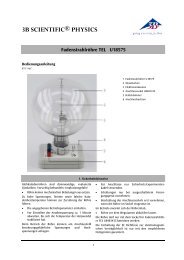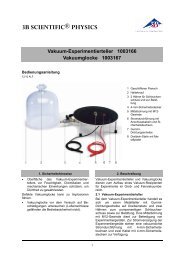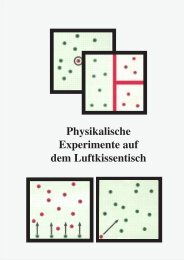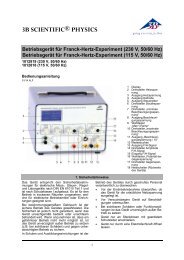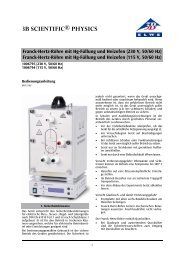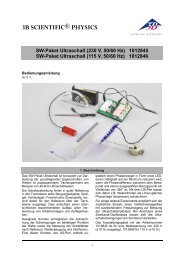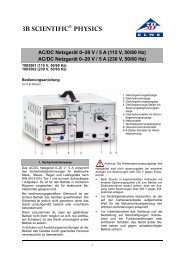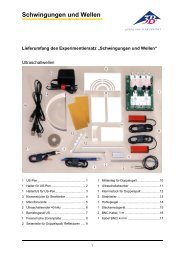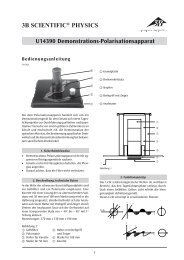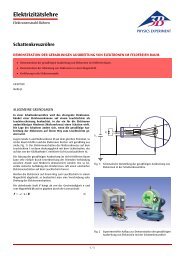3B SCIENTIFIC® PHYSICS Wellenwanne U21910
3B SCIENTIFIC® PHYSICS Wellenwanne U21910
3B SCIENTIFIC® PHYSICS Wellenwanne U21910
You also want an ePaper? Increase the reach of your titles
YUMPU automatically turns print PDFs into web optimized ePapers that Google loves.
2.2 Circular waves encountering a narrow<br />
slit<br />
• Proceed as in Experiment 2.1 but raise<br />
the exciter up and lower the dipper (so<br />
that it just touches the surface of the<br />
water)<br />
• Move the vibrator so that the dipper<br />
strikes the water about 5 cm in front of<br />
the obstruction<br />
• Vary the width of the slit so that the resulting<br />
waves are clearly visible<br />
2.3 How a block resembles a point-shaped<br />
exciter<br />
• Proceed as in Experiment 1.6<br />
• Put a block in the centre of the tank<br />
• Circular ripples spread out from the<br />
block (as if from the dipper)<br />
• Adjust the amplitude so that the resulting<br />
waves are clearly visible<br />
3. Reflection of waves<br />
3.1 Reflection of a linear wave at a plane<br />
wall<br />
• Proceed as in Experiment 1.6<br />
• Place the rectangular block about 5-10<br />
cm from the exciter at an angle of 45°<br />
to the wavefronts<br />
• Make fine adjustments to the frequency<br />
and amplitude till the reflected waves<br />
are clearly visible<br />
3.2 Reflection of a circular wave at a plane<br />
wall<br />
• Proceed as in Experiment 2.2<br />
• Place the rectangular block about 5-10<br />
cm from the exciter<br />
a. parallel to the left wall of the tank,<br />
b. at an angle of 45°<br />
• Make fine adjustments to the frequency<br />
and amplitude till the reflected waves<br />
are clearly visible<br />
5



